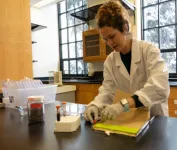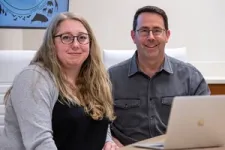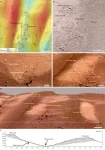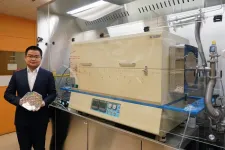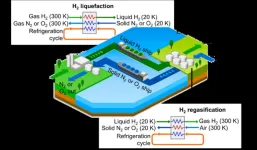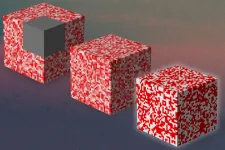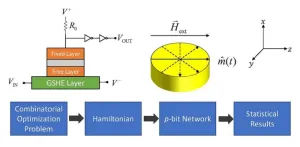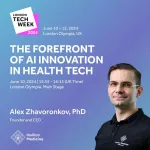(Press-News.org) Researchers have figured out a way to predict bacteria’s environmental pH preferences from a quick look at their genomes, using machine learning. Led by experts at the University of Colorado Boulder, the new approach promises to help guide ecological restoration efforts, agriculture, and even the development of health-related probiotics.
“We know that in any environment, there’s a ton of bacteria with important ecological functions, but their environmental preferences often remain unknown,” said Noah Fierer, a fellow of the Cooperative Institute for Research in Environmental Sciences (CIRES) and professor of ecology and evolutionary biology at CU Boulder. “The idea is to use this technique to figure out the basics of their natural history.”
Understanding whether certain bacteria are most likely to thrive in acidic, neutral, or basic environments is just a first step, said lead author Josep Ramoneda, a CIRES visiting scholar. “You could use this approach to anticipate how microbes will adapt to almost any environmental change,” he said. Say, for example, sea-level rise is bringing more saline water into a coastal wetland. “We can anticipate how microbes will respond to these environmental changes,” Ramoneda said.
The new work was published today in the journal Science Advances, and co-authors include others from CIRES and CU Boulder as well as colleagues from Canada.
Microbes, including bacteria, are critical to the functioning of ecosystems; helping plants grow, enabling nutrient cycling in lakes, and even supporting human digestion. But often, they’re impossible to isolate and grow in the lab, so we often know little about them, Ramoneda and Fierer said—except for their genetic makeup. Genetic “fishing” techniques of recent decades have led to exponentially growing databases of bacterial genomes.
So the research team drew on what scientists know about a few bacterial groups, which thrive at one particular pH or another, and then used machine learning to link those groups’ environmental pH preferences with their genetic makeup. The work involved sorting through the genomes of more than 250,000 types of bacteria from nearly 1,500 soil, lake, and stream samples.
“What we found is we can make inferences about their pH preferences based on genomic data alone,” Ramoneda said. For scientists, one of the finding’s most immediate implications is that it could help them grow colonies of finicky bacteria they’ve never been able to grow before, by giving them a first guess at what pH to use. It can take years to figure out how to “culture” bacteria so they can be studied in the laboratory and the machine-learning method could make that process far, far more efficient, Fierer said.
Agricultural and forestry experts also often add live bacteria to “inoculate” growing plants with helpful communities of bacteria, Ramoneda said. Now, they may get quicker, better insight into the types of bacteria that might help restore a native prairie vs. pine forests, or to better grow corn or soybeans, by ensuring that inoculants will be adapted to the local pH.
Next, the team plans to try to get insight into the temperature preferences of bacteria, another complex system likely involving many, many genes. That could help them better understand how warming will influence soil bacterial communities, for example.
“The alternative is to try to grow them all in the lab, and that’s painful,” Fierer said.
Funding for this work came from the Swiss National Science Foundation, U.S. National Science Foundation, Natural Sciences and Engineering Research Council of Canada, U.S. Department of Energy, and U.S. Department of Agriculture.
END
Machine learning helps scientists identify the environmental preferences of microbes
2023-04-28
ELSE PRESS RELEASES FROM THIS DATE:
Tianwen-1: Zhurong Rover finds evidence of water at low latitudes on modern Mars
2023-04-28
The Zhurong rover has found evidence of water on dune surfaces on modern Mars by providing key observational proof of liquid water at low Martian latitudes, according to a study led by Prof. QIN Xiaoguang from the Institute of Geology and Geophysics (IGG) of the Chinese Academy of Sciences (CAS).
The study was published in Science Advances on April 28.
Researchers from the National Astronomical Observatories of CAS and the Institute of Atmospheric Physics of CAS were also involved in the study.
Previous ...
Looking for insights from our nearest star-forming galaxy
2023-04-28
Vallia Antoniou, an assistant professor of practice in the Department of Physics and Astronomy at Texas Tech, has been awarded observing time on the powerful Chandra X-Ray Telescope to explore some of the deepest recesses of the universe.
It marks the second major Chandra program led by Antoniou, who is also a research associate with the Smithsonian Astrophysical Observatory.
Each year, astronomers from around the world follow a rigorously competitive process to receive Chandra time. The telescope was launched aboard the space shuttle Columbia in 1999 and orbits Earth, offering previously unavailable views of deep space at wavelengths that are not accessible from ground telescopes. During ...
MIT engineers “grow” atomically thin transistors on top of computer chips
2023-04-28
CAMBRIDGE, MA — Emerging AI applications, like chatbots that generate natural human language, demand denser, more powerful computer chips. But semiconductor chips are traditionally made with bulk materials, which are boxy 3D structures, so stacking multiple layers of transistors to create denser integrations is very difficult.
However, semiconductor transistors made from ultrathin 2D materials, each only about three atoms in thickness, could be stacked up to create more powerful chips. To this end, MIT researchers have now demonstrated a novel technology that can effectively ...
How solid air can spur sustainable development
2023-04-28
The green hydrogen economy is a sustainable alternative to fossil fuels. However, one of the challenges of constructing a global hydrogen economy is hydrogen transportation by sea. A new paper proposes solid air as a medium for recycling cold energy across the hydrogen liquefaction supply chain.
The world is undergoing an energy transition to reduce CO2 emissions and mitigate climate change. The COVID-19 pandemic and the Russia-Ukraine war have further increased the interest of Europe and Western countries to invest in the hydrogen economy as an alternative to fossil fuels. Hydrogen can significantly reduce geopolitical risks ...
Deep-learning system explores materials’ interiors from the outside
2023-04-28
CAMBRIDGE, MA — Maybe you can’t tell a book from its cover, but according to researchers at MIT you may now be able to do the equivalent for materials of all sorts, from an airplane part to a medical implant. Their new approach allows engineers to figure out what’s going on inside simply by observing properties of the material’s surface.
The team used a type of machine learning known as deep learning to compare a large set of simulated data about materials’ external force fields and the corresponding internal structure, and used that to generate a ...
Solving computationally complex problems with probabilistic computing
2023-04-28
According to computational complexity theory, mathematical problems have different levels of difficulty in the context of their solvability. While a classical computer can solve some problems (P) in polynomial time — i.e., the time required for solving P is a polynomial function of the input size — it often fails to solve NP problems that scale exponentially with the problem size and thus cannot be solved in polynomial time. Classical computers based on semiconductor devices are, therefore, inadequate ...
York University leads $318.4M first-of-kind inclusive next-gen technology research initiative
2023-04-28
TORONTO, April 28, 2023 — Is an equitable world that includes humans and machines possible? York University researchers believe it must be and have set out to make it so through a first of its kind interdisciplinary research initiative called Connected Minds: Neural and Machine Systems for a Healthy, Just Society.
From universities to industries, hospitals and policymakers, artists and Indigenous communities, York’s Connected Minds will engage 50+ community partners and research collaborators over seven years supported by a historic $318.4 million in funding. Connected Minds has received a combined $105.7 million from the Canada First Research ...
Shocking implications of electric fishes’ tailless sperm
2023-04-28
Betting on tailless sperm that evolved from brave swimmers to hapless floaters seems like a crazy evolutionary gamble, but a group of fish seems to have done just that. Understanding that tradeoff holds promise to shed light on human disease and shake up biology lessons on traditional gender roles.
Michigan State University associate professor of integrative biology Jason Gallant and colleagues are using nearly $1 million from the National Science Foundation to understand the implications from a small African fish which ...
Insilico Medicine founder and CEO Alex Zhavoronkov, Ph.D., presents at LSX World Congress
2023-04-28
Alex Zhavoronkov, PhD, founder and CEO of Insilico Medicine (“Insilico”) will present at the 9th LSX World Congress happening in London May 3 and May 4. Zhavoronkov, an expert in generative artificial intelligence (AI) for drug discovery, will present on May 3, 2:45pm (London time) on “‘Death By Pilot’” to Asset Licensing – the Evolution of Pharma-AIDD Partnerships” as part of the Biotech Growth CEO Forum and on May 4, 9:30am (London time) on “Building a Galvanizing ...
Texas Neurologist and Professor elected New American Academy of Neurology President
2023-04-28
MINNEAPOLIS – The American Academy of Neurology (AAN), the world’s largest professional association of neurologists and neuroscience professionals, has elected as its 38th president Carlayne E. Jackson, MD, FAAN, a neurologist, researcher and professor of neurology and otolaryngology at the University of Texas Health Science Center at San Antonio. Jackson succeeds Orly Avitzur, MD, MBA, FAAN, who completed her two-year term as president during the recent AAN Annual Meeting.
“It’s humbling to have been chosen by my colleagues to follow such talented and dedicated individuals ...
